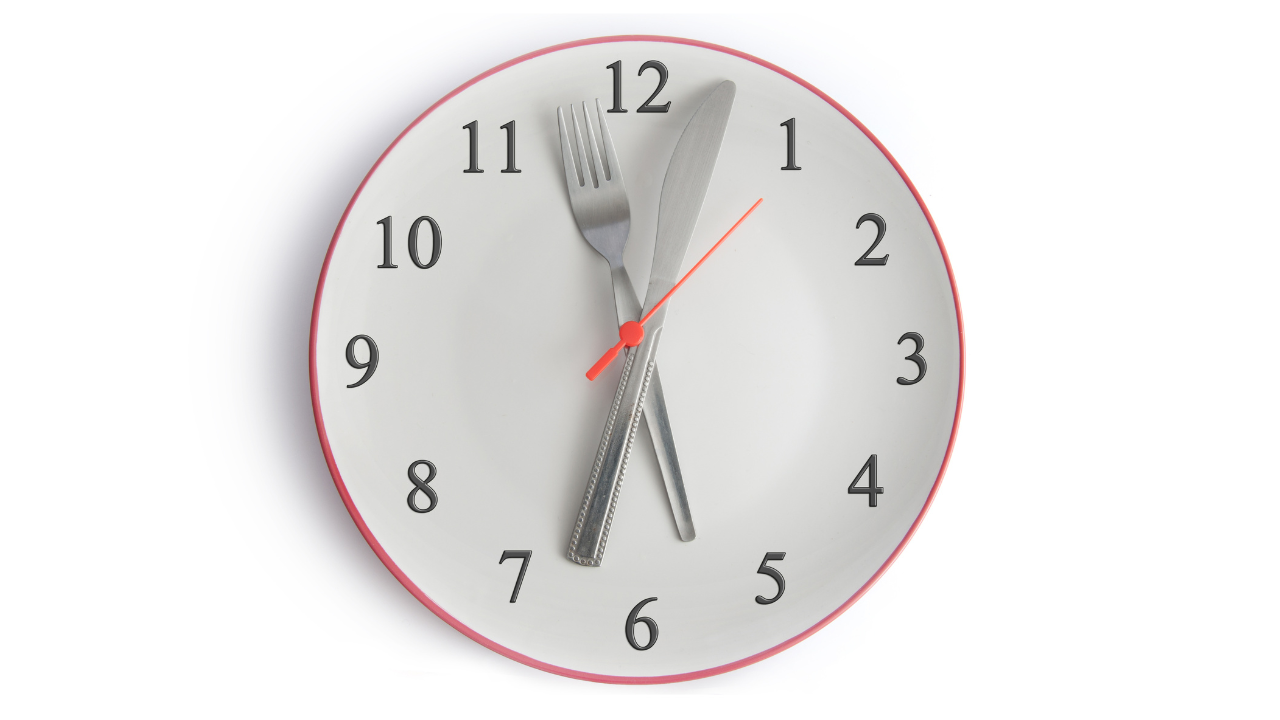
14 Apr How Changing When You Eat Can Help Reverse Type 2 Diabetes
When it comes to learning how to reverse type 2 diabetes, most people focus on what to eat — but did you know that when you eat can be just as important?
In today’s busy world, it’s common to grab meals on the go, snack at our desks, or eat our biggest meal late at night. In fact, a YouGov survey found that 52% of UK adults eat their main meal in the evening. But could changing this simple habit make it easier to lose weight, balance blood sugar, and even reverse type 2 diabetes?
Can Changing Meal Times Really Help Reverse Type 2 Diabetes?
Research suggests that the timing of your meals plays a big role in metabolism and blood sugar control. Studies show that people who eat their largest meal later in the day are more likely to be overweight or obese than those who eat earlier. This is because our metabolism naturally slows in the evening, meaning our bodies burn fewer calories and process glucose less efficiently.
Eating late can also interfere with sleep — another key factor in managing insulin sensitivity. When you eat a heavy meal close to bedtime, your body must work harder to digest it, which can lead to restless nights, poor recovery, and higher blood sugar the next day.
What Is Time-Restricted Eating and How Does It Support Type 2 Diabetes Reversal?
Time-Restricted Eating (TRE) is a simple yet powerful lifestyle approach that can help you take control of your blood sugar, energy levels, and weight. It’s a form of intermittent fasting where you eat all your daily meals within a set time window — for example, 8 hours — and fast for the remaining hours of the day.
Popular TRE patterns include:
- 16/8 method: Fast for 16 hours, eat within 8 hours (e.g., 10am–6pm).
- 18/6 method: Fast for 18 hours, eat within 6 hours.
- 20/4 method: Fast for 20 hours, eat within a 4-hour window.
By aligning your eating window with daylight hours — when your metabolism is naturally more active — you may help your body use energy more efficiently and improve insulin sensitivity, both of which are essential for reversing type 2 diabetes.

What Are the Benefits of Time-Restricted Eating for Type 2 Diabetes?
1. It Can Naturally Reduce Calorie Intake
By limiting the number of hours you eat each day, you often end up eating fewer calories overall without counting or restricting food. This helps create a sustainable calorie balance that supports weight loss and metabolic health.
2. It Improves Metabolism
Eating within a consistent time frame helps regulate your circadian rhythm — your body’s internal clock. This can enhance energy levels, fat metabolism, and blood sugar control, all of which support type 2 diabetes reversal.
3. It Boosts Insulin Sensitivity
When you fast, insulin levels drop, giving your body time to reset its sensitivity to insulin. Improved insulin sensitivity means your body can use glucose more effectively, reducing the risk of blood sugar spikes.
4. It Reduces Inflammation
Chronic inflammation contributes to insulin resistance and metabolic dysfunction. Studies show that TRE can reduce inflammation, helping your body function more efficiently and improving overall wellbeing.
For more insights into how your eating patterns affect your blood sugar and metabolism, you can watch Dr Nerys’s free Three-Part Health Breakthrough Video Series.
How Can You Make Time-Restricted Eating Work for You?
Switching to time-restricted eating doesn’t have to be complicated. Here are some simple strategies to make it easier and more effective:
- Listen to your body: Eat when you’re genuinely hungry and stop when you feel satisfied.
- Time your meals around your activity: If you’re more active in the morning, consider making breakfast or lunch your biggest meal.
- Avoid eating too close to bedtime: Aim to finish your last meal at least 2–3 hours before sleep for better digestion and blood sugar control.
- Plan ahead: Preparing healthy, balanced meals earlier in the day helps you avoid snacking late at night.
- Prioritise whole foods: Choose meals rich in protein, fibre, and healthy fats to stay fuller for longer and maintain stable blood sugar levels.
- Stay hydrated: Drink water or herbal tea during fasting hours to stay full and reduce cravings.
- Find healthy evening habits: If you usually snack at night, replace that habit with a relaxing activity — like reading, stretching, or meditation.
Is Changing Meal Timing Safe for Everyone?
While time-restricted eating can be an effective tool for improving blood sugar control and reversing type 2 diabetes, it’s not suitable for everyone.
People who should use caution include:
- Those with a history of eating disorders.
- Anyone taking blood sugar–lowering medications such as insulin, gliclazide, or glimepiride.
- People on medications that must be taken with food, including aspirin, ibuprofen, or metformin.
If any of these apply to you, speak with your healthcare provider or pharmacist before starting. Always tailor your eating routine to your personal health needs.
How Can You Use Meal Timing to Support Your Type 2 Diabetes Reversal Journey?
Changing when you eat is a simple but powerful step toward better metabolic health. Combining meal timing with nutrient-dense foods, stress management, and quality sleep can accelerate your progress.
For more practical guidance, download Dr Nerys’s free Blood Sugar Guide — it’s full of easy, evidence-based tips to help you balance your blood sugar and reverse type 2 diabetes naturally.
And remember, small daily changes in how and when you eat can lead to big transformations over time.
Final Thoughts: Can Meal Timing Help You Reverse Type 2 Diabetes?
Absolutely. By adjusting your eating window, aligning meals with your natural body rhythms, and avoiding late-night eating, you can support your metabolism, improve insulin sensitivity, and move closer to your goal of reversing type 2 diabetes.
It’s not just about what’s on your plate — it’s about when you eat it.
